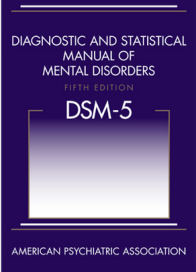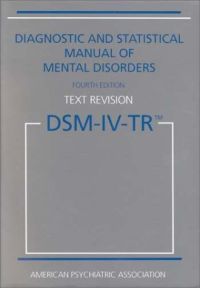The United States is in the midst of an opioid epidemic, and the media has been reporting on the problem. Unfortunately, there is a lot of misconception about patterns of opioid use, the difference between opioid addiction and dependence, and what is considered opioid use disorder. Understanding these distinctions is essential to make informed policy decisions about combatting the opioid epidemic.
Opioid use disorder refers to a pattern of problematic use of opioids, whether prescription painkillers or heroin. Physicians use criteria from the Diagnostic and Statistical Manual of Mental Disorders (DSM) to diagnose opioid use disorder. The American Psychiatric Association publishes the DSM to ensure that physicians and mental health professionals use standardized criteria to diagnose problematic opioid use. The American Psychiatric Association recently released the fifth edition of the DSM (DSM-5), which contains some changes from the most previous version of the DSM (DSM-IV-TR).
DSM-5 Criteria for Opioid Use Disorder
In the DSM-5, an opioid use disorder is a specialized form of substance use disorder. To meet the criteria, individuals must have at least two of the following symptoms that occur within a 12-month period:
- Opioids are taken in larger amounts than intended or over a longer period of time than intended.
- Persistent desire or unsuccessful efforts to control or cut down on opioid use
- Spending a large amount of time in activities to get the drug, use the drug, or recover from the effects of the drug
- Craving, characterized by a strong urge to use opioids
- Failure to fulfill major role obligations at home, work, or school because of recurrent opioid use
- Continuing to use opioids despite having recurrent social or interpersonal problems that result from the drug use (e.g., fights with family members, legal issues)
- Giving up or reducing the frequency of important social, recreational, or occupational activities (e.g., stopping attending family activities)
- Continuing to use opioids in situations in which it is physically hazardous (e.g., driving under the influence of opioids)
- Continuing to use opioids despite knowing that physical or psychological problems are exacerbated or made worse by using the opioids
- Tolerance, defined as at least one of the following:
- Need for markedly higher amounts of opioids to achieve the same effects as previously
- A markedly lower effect of opioids with continued use of the same amounts of the drug
- Withdrawal, defined as at least one of the following:
- Opioid withdrawal syndrome includes mood changes, nausea, vomiting, muscle aches, watery nose or eyes, diarrhea, dilated pupils, sweating, yawning, fever, and insomnia.
- Continued use of opioids to alleviate or avoid withdrawal symptoms
How DSM-5 Opioid Use Disorder Differs from DSM-IV-TR Criteria
The previous version of the DSM had different criteria that comprised opioid use disorder. In the DSM-IV-TR, two different diagnostic categories describe problematic opioid use: substance abuse and substance dependence.
For over 25 years, people from all over the world have chosen Waismann Method as their opioid detox provider.
We know the challenges you face and the importance of creating a unique and personal experience for you right from the start.Call for Detox Options 1-800-423-2482
The first diagnosis, substance abuse, characterized a milder or earlier problematic opioid use phase. This did not include any physical dependence on the drug. The substance abuse diagnosis included many of the behavioral features of the DSM-5 opioid use disorder diagnosis, such as failure to fulfill role obligations, continued use despite interpersonal problems, or recurrent use in hazardous situations.
The second diagnosis, substance dependence, required a person to experience either tolerance or withdrawal. It also included taking opioids in larger amounts or over a longer period of time than intended, as well as unsuccessful efforts to cut down on opioid use. Professionals considered substance dependence to be a more chronic or severe condition than substance abuse.
Why is the Change in Diagnostic Criteria Important?
The change from DSM-IV to DSM-5 helped clarify several misconceptions about substance use disorders. Perhaps most relevant is that physical dependence symptoms — tolerance and withdrawal — are no longer characterized as a more “severe” form of opioid use. Physical dependence can develop at any stage of opioid use. Although the DSM-5 criteria include physical dependence and addiction (the behavioral features that include cravings), the criteria make it more straightforward to diagnose a pattern of problematic opioid use without relying on artificial distinctions between diagnostic categories.
Source
Substance-Related and Addictive Disorders, the American Psychiatric Association.








